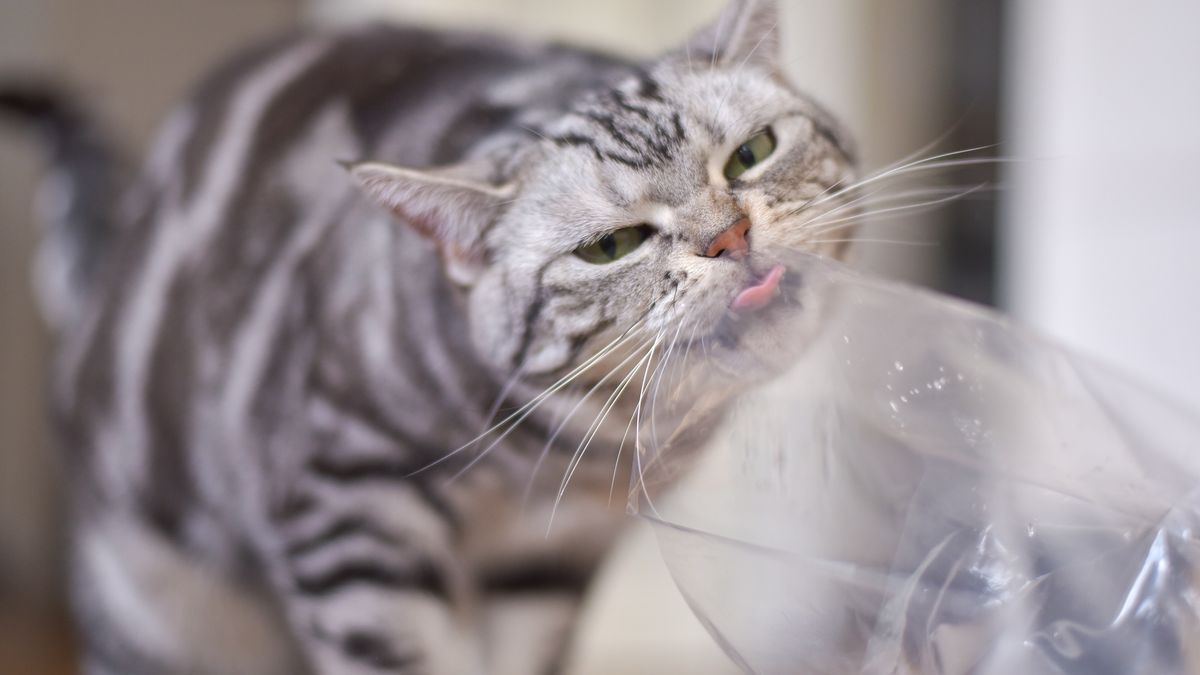Sometimes it can feel like cats live in their own little world. They zoom around the house as if they own the place, communicate with subtle signals, and hate it when we close the door.
Cats also like to lick — a lot. And they lick plenty of things that aren’t food. When cats lick or suck on an inedible material, it is called “wool sucking.” But they don’t suck only on wool — they also do it with leather, rubber and plastic.
“Each cat has its own particular predilection,” said Dr. Nicholas Dodman, a professor emeritus of animal behavior at Tufts University and a veterinarian who has been studying compulsive behavior in animals for over 30 years.
But why do cats lick plastic bags and other nonedible things? And is it dangerous?
One theory is that this behavior comes from a cat’s desire to nurse as a kitten. Siamese cats are the most likely to exhibit wool sucking, and they are also the breed that nurses with their mothers the longest, Dodman said.
“They would like to stay with their mums and cycle a nurse for 12 or 14 weeks,” he explained. “And then they’re placed at nine weeks. They’ve still got this suckling drive. And it has to go somewhere.” He thinks that drive is what leads cats to suck on wool, leather and plastic.
Related: Why do cats have bald spots in front of their ears?
Other cat breeds nurse for only around seven weeks, so if they leave their mothers at nine weeks, they don’t have this suckling desire anymore, he said.
Dr. Valarie Tynes, a veterinarian who specializes in animal behavior, is less certain about Dodson’s weaning theory because it hasn’t yet been proved experimentally yet. But she agreed that plastic sucking is some kind of self-soothing behavior for the cats, similar to how human babies suck their thumbs.
As far as whether it’s dangerous, licking plastic, on its own, doesn’t worry Tynes. “If this cat has always licked unusual things ever since it was a young cat and it doesn’t do it for an extraordinary part of the day, I worry less about that,” she said. “As long as [the cat]’s not eating it.”
If a cat is eating plastic or anything else that isn’t food, that’s called pica, and it’s a problem. If the cat ingests nonedible items, they can become lodged in a cat’s intestines and require expensive surgeries to be removed. If not treated, these blockages can be fatal.
If your cat eats any nonfood items, you should bring it to the vet, both experts recommended. And if you don’t get the treatment you’re looking for, consider consulting a behavior specialist, Tynes said.
“The saddest thing for me,” she said, “is the clients I’ve seen who maybe have spent, you know, thousands of dollars on multiple surgeries to remove things from their cat,” instead of working to address the problem in the cat’s behavior.
When a cat with pica is brought to the vet, first they are tested for any other possible gastrointestinal issues, like parasites. Once the problem is determined to be behavioral, there are a few possible treatments.
Dodman said some vets can prescribe medication similar to human treatments for obsessive-compulsive disorder, like Prozac. Owners can also distract their cats when they are engaging in undesirable behaviors, and provide more toys and other activities for the cats to play with instead. Tynes suggested growing some cat grass or buying a dog chew toy for a cat to eat instead of harmful plastic.
It’s also important to remember that your cat doesn’t know it’s doing anything wrong, Tynes emphasized. Don’t blame your feline friend for licking your grocery bag. Just pay attention, and talk to a vet if it becomes a problem.
